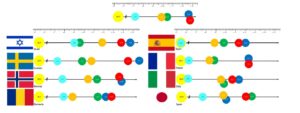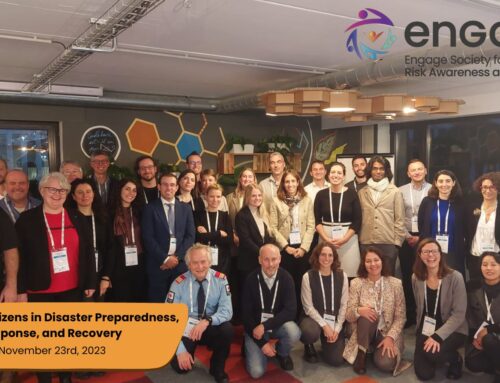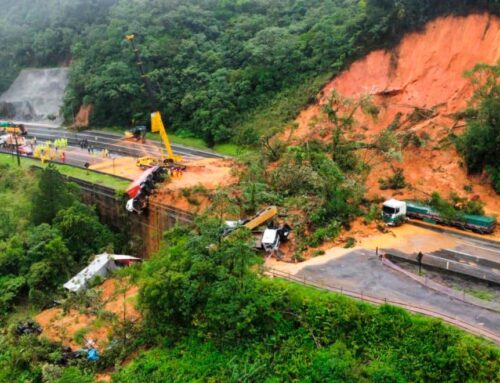Ample research has been carried out over the last three decades (and more) to conclude which factors contribute to public readiness to emergencies and disasters and enhance societal resilience to cope with adversities. Most recently, a 2019 publication by Douglas Paton, a world-renowned expert in this field, summarized the results of a vast and ongoing research. Other models exist, attempting to explain both the concept of societal resilience to disasters and emergencies, as well as the determinants that affect it. Yet, improving societal resilience proves to be an ongoing challenge worldwide.
Factors associated with societal resilience can be roughly divided into two categories: Contextual factors, i.e., inherent in the society and difficult to modify, and Target factors, i.e., individual and societal attributes that can be more easily modified. Examples of contextual factors include socioeconomic factors, religiosity, proportion of education levels in the society, and even personality traits. Examples of target factors include threat awareness, public trust, coping skills, and actual preparedness.
ENGAGE is a European funded project that aims at linking the informal resilience naturally inherent in citizens and first responders with the formal work of authorities to prevent, prepare for, respond to, and recover from disasters. It brings together 14 partners from 8 countries aiming to show how individuals and local practices can interrelate effectively with planned preparedness and response, practitioners, and technology.
Surveying public perceptions of social resilience and risk awareness
One of the first phases of the ENGAGE project was a survey of samples from the populations of eight countries using an internet probability-based panel to map public perceptions, awareness, needs and expectations for societal resilience throughout the complete crisis cycle. The objectives of this study included:
- comparing views and perceptions of diverse populations, to identify commonalities and diversities concerning societal resilience;
- understanding the relationships between risk awareness and actual resilience among different civil societies;
- mapping the trust of citizens in varied responders and authorities in order to understand its impact on their societal resilience; and
- gathering knowledge about the use of social media and other popular communication technologies by citizens, and social groups as a tool for societal resilience.
Results of the survey
The results of this multi-national survey, which included more than 4,000 participants, suggest that for the overall sample, pandemics were the risk of which participants showed the highest concern followed by critical infrastructure fail, social disturbance (e.g., armed conflicts), natural hazards (e.g., earthquakes), and extreme weather events. Threat awareness changed between cohorts of different countries. For example, take a look at Figure 1. It shows the mean distance assigned to different risks (represented by the colored disk) in relation to the respondent (represented by the yellow disk). The further the distance, the less of a concern this risk is to the respondents. Note that while the overall picture is similar across the different cohorts, there are some differences in priorities, as well as distances between publics of different countries. For instance, French, Spanish and Italian cohorts placed pandemics very close to themselves, much more than other countries. This may be echoing their experience with COVID-19.
In most countries, trust levels are relatively high for emergency services and the health services, and relatively low for politicians and media. In the overall sample, the individual preparedness index, which delineates the compliance with general household adjustment recommendations for emergencies, averaged at 4.44±2.05SD (out of 8), which means a mediocre level of households’ preparedness. Some variability was observed between the countries, with some countries (e.g., Spain, Norway and Italy) reporting higher preparedness rates than others (e.g., Japan). In the overall sample, levels of individual resilience were mediocre. Multivariate analysis showed that the following variables are predictors of societal resilience: trust, social norms and communality, communication needs during emergencies, perception of individual resilience, level of individual preparedness, risk awareness, and age. In other words, societies that enjoy higher levels of communality and trust and are comprised of individuals that are aware of threats and prepare for them, also demonstrate higher levels of societal resilience to disasters and emergencies.

Figure 1. Results of the iPRISM tool assessing risk awareness through distances assigned by participants between themselves (yellow “SELF” disk) and specific risk objects (Light blue: Pandemics, Orange: Critical infrastructure fail (water, energy), Green: Social disruption (e.g., war), Blue: Natural Hazard (e.g., earthquakes), and Red: Extreme weather). Top image is overall sample (N=4,013). National samples are presented with their flag on the right of the image. Top image depicts the results of the overall sample.
Conclusions
The results of this study show that there are commonalities and differences between societies across Europe and beyond concerning societal resilience at large, including concerning preparedness, individual resilience and risk perception. In particular, this study shows that societies share varied characteristics that may contribute towards a common model for assessing societal resilience (“Societal Resilience Model”) and for explaining and predicting resilience and readiness, which is relevant regardless of the nationality of participants. Nevertheless, when zooming into each society, differences can be found in attitudinal factors associated with said resilience.
The conclusion of this study with regard to risk awareness is that societies have different risk perceptions. Therefore, instead of trying a global approach to resilience promotion, a regional-based approach is needed to adapt and adjust to local contexts, both within each country and between countries.
Lastly, the findings suggest that societies have little trust in governments and varied trust toward emergency services, health services, and other stakeholders relevant for disasters and emergencies. Trust can be fostered through appropriate risk communication initiatives that value transparency, accuracy, simplicity, and timing. Since trust is a major component in societal resilience and is even found in this study to serve as a predictor of societal resilience, it is imperative that wherever trust between the public and the authorities is not strong enough, substantial efforts will be made to earn such well-needed levels of trust.
Authors: Bodas Moran, Peleg Kobi, Stolero Nathan, Adini Bruria (Tel Aviv University)





